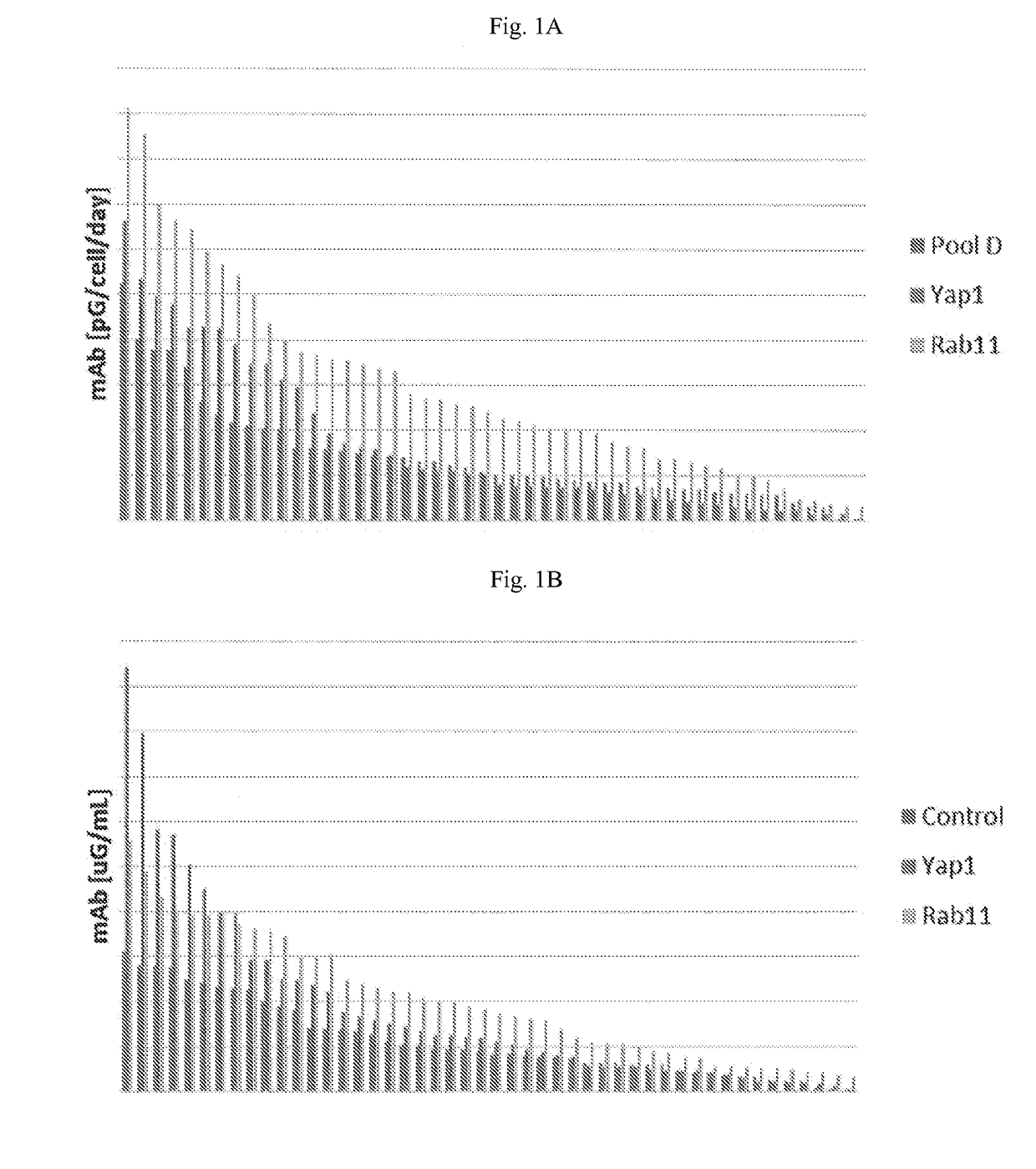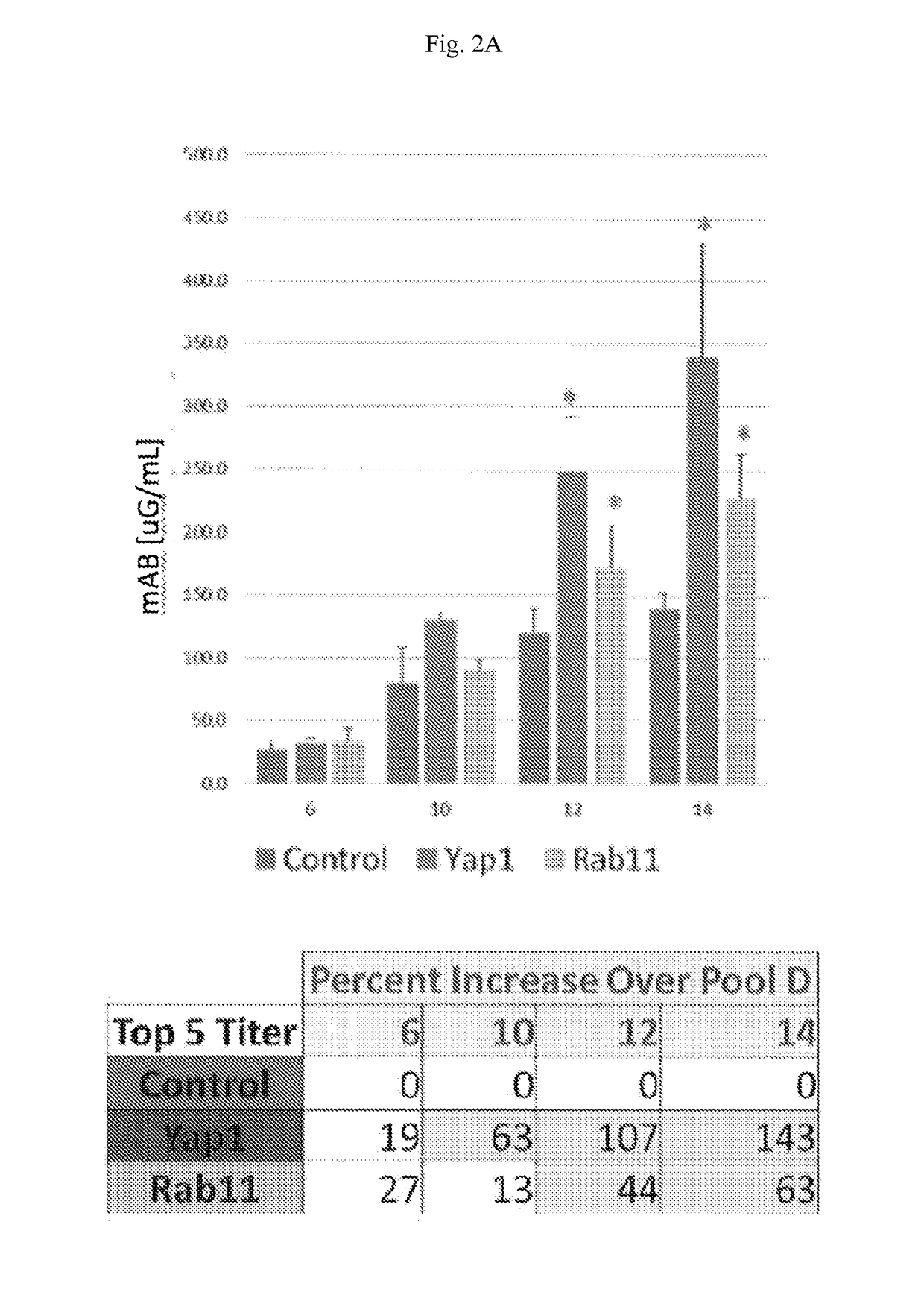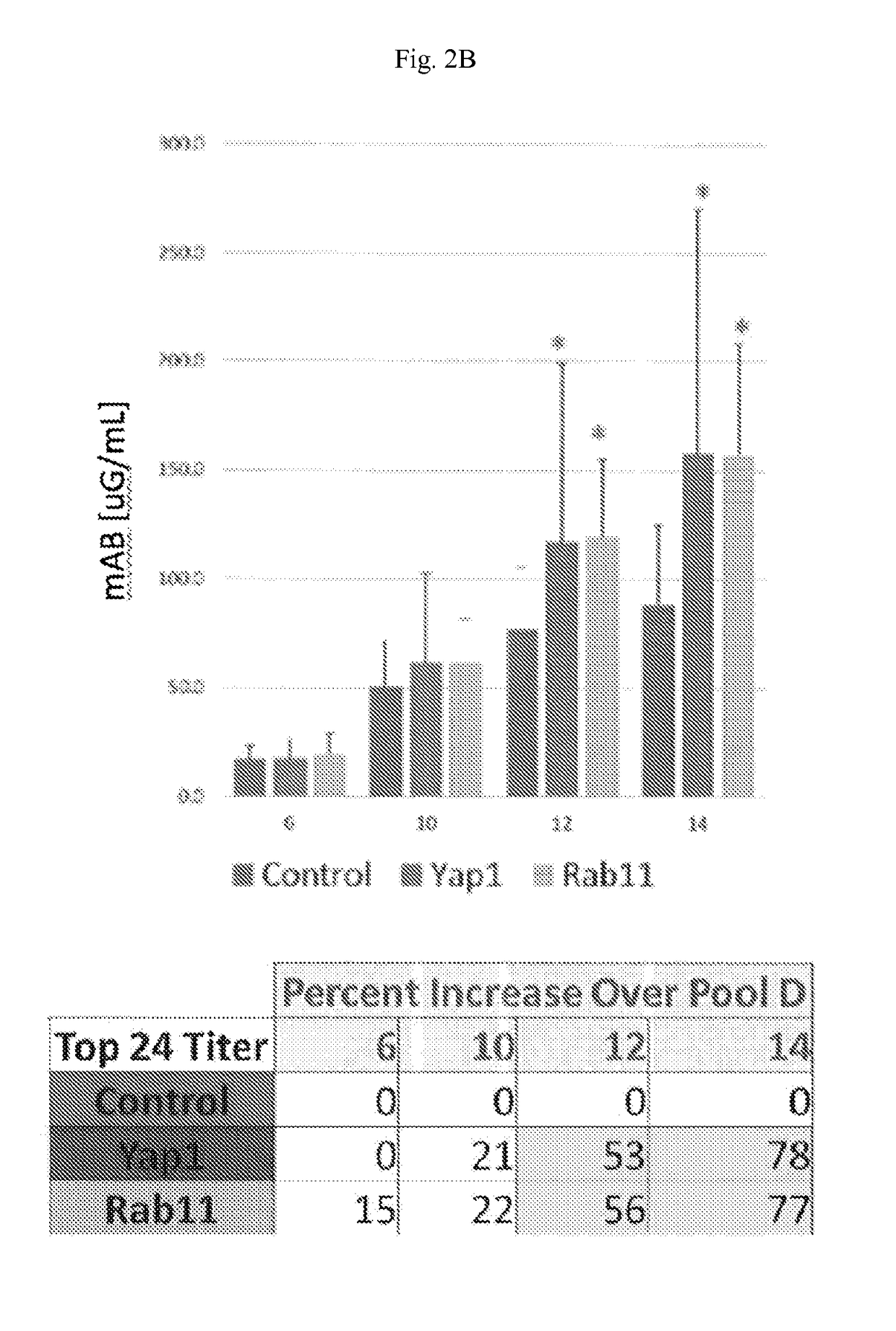Methods of increasing protein production in mammalian cells
a technology of mammalian cells and protein production, applied in the field of mammalian cell protein production, can solve the problems of unequipped to handle the increased secretory flux required to produce high levels of recombinant protein, and achieve the effects of improving the productivity of host cell protein, high levels of recombinant protein, and increasing secretory flux
- Summary
- Abstract
- Description
- Claims
- Application Information
AI Technical Summary
Benefits of technology
Problems solved by technology
Method used
Image
Examples
example 1
[0082]To determine if an increase in the secretory capacity of a Chinese hamster ovary (CHO) cell correlates with an increase in relative metrics of protein titer and specific productivity, DG44i host cells were engineered to express one of fifteen genes. The engineered CHO cells were evaluated with a model therapeutic antibody and examined at the uncloned pool stage. Several pools displayed increases in titer and specific productivity compared to unmodified DG44i (FIGS. 1A and 1B). Two of these pools were selected for further analysis at the clone stage; those modified by Yap1 and Rab11 expression.
[0083]Rab11b and Yap1 were stably expressed in CHO cells. The engineered cells were then used to express a model therapeutic antibody. Forty-eight clones from each host were examined in a fed batch. Analysis of the top five clones originating from the engineered cell lines, Rab11b and Yap1, result in two-fold increases in specific productivity (FIGS. 3A and 3B) and titer (FIGS. 2A and 2B)...
example 2
[0089]Experiments were next conducted to investigate whether the enhanced productivity seen with Rab11b and Yap1 overexpression was molecule specific or could be achieved with other molecules. To this end, host cell lines were auditioned with a second monoclonal antibody (mAb2). Stable cell lines expressing Rab11b, Yap1 or unmodified DG44 host cells were engineered to express mAb2. A primary screen of unamplified cell lines expressing mAb2 confirmed the positive benefits of Rab11b and Yap1 expression observed with mAb1 (FIG. 6, left panel, data not shown).
[0090]Next, to further increase the expression of mAb2, the top three unamplified cell lines from each of the engineered hosts (Rab11b & Yap1) and unmodified DG44 control were amplified with varying concentrations of methotrexate. Analysis of the top amplified mini-pools resulting from Rab11b and Yap1 hosts cell lines showed greater than two-fold increases in both titer (FIG. 6, top right panel, and FIG. 8A) and specific productivi...
PUM
| Property | Measurement | Unit |
|---|---|---|
| Fraction | aaaaa | aaaaa |
| Fraction | aaaaa | aaaaa |
| Therapeutic | aaaaa | aaaaa |
Abstract
Description
Claims
Application Information
 Login to View More
Login to View More - R&D
- Intellectual Property
- Life Sciences
- Materials
- Tech Scout
- Unparalleled Data Quality
- Higher Quality Content
- 60% Fewer Hallucinations
Browse by: Latest US Patents, China's latest patents, Technical Efficacy Thesaurus, Application Domain, Technology Topic, Popular Technical Reports.
© 2025 PatSnap. All rights reserved.Legal|Privacy policy|Modern Slavery Act Transparency Statement|Sitemap|About US| Contact US: help@patsnap.com



